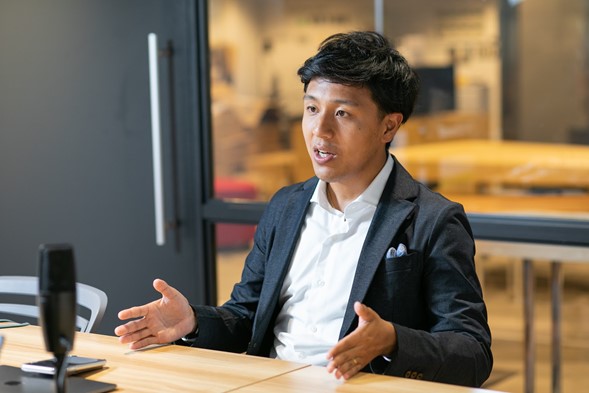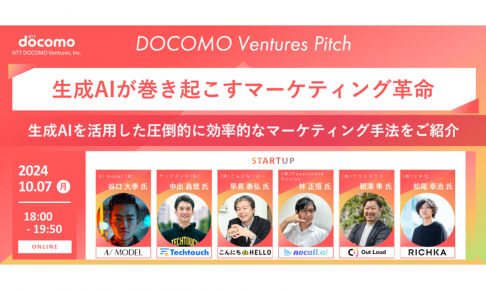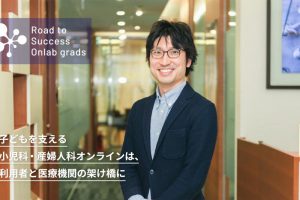筆者の見解では、狭義のD2Cの定義は「データをバリュープロポジションの改善に活用するライフスタイルブランド」である。例えば顧客データを商品開発に役立てたり、マーケティングに活かしたり、と経営活動にデータを活用する。
狭義のD2Cが行き着く先のひとつは、商品のパーソナライズだ。顧客から定性的・定量的なデータを収集し、顧客一人ひとりに最適な商品を提案する。pilot boatで取材してきたところだと、スーツを扱うFABRIC TOKYOや、シャンプーのMEDULLA、ペットフードのPETOKOTO FOODS等が該当すると考えている。
D2Cはライフスタイルブランドなので、当然「食」もその一分野だ。今回紹介する「the kindest(カインデスト)」は、パーソナライズとサブスプクリプションをかけ合わせた、オーガニックベビーフード等を展開するライフスタイルブランドである。
the kindestを提供することになったきっかけは。仕組みは。データをバリュープロポジションにどう活かしているのか。the kindestを運営する株式会社MiL(ミル、以下「MiL」)の杉岡氏に話を聞いた。

株式会社MiL 代表取締役CEO
杉岡 侑也(Sugioka Yuya)
大学受験に失敗し5年間フリーター。人生どん底から、環境に恵まれ復活した経験より”人の可能性は無限大” を証明するため起業。2016年大学生のキャリア支援を行う株式会社Beyond Cafeを創業し、1年で年間1万人100社が利用する企業へと成長。2018年には中小企業支援、非大卒者のキャリア支援を行う株式会社ZERO TALENTを創業。数多くファウンダーとして事業の立上げを経験する中で、人の可能性を突き詰めるためには、身体と心のパフォーマンスを最大化させる重要性を痛感する。2018年、妻とシェフの3人でフード×ヘルスケアスタートアップ株式会社MiLを創業。
子供の成長や個性に合わせたベビーフード
農林水産省によれば2020年の食市場は、日本が67兆円、世界で680兆円になる巨大マーケットだ。あらゆる産業のDXが叫ばれる昨今、食市場にもEC化やデジタル化の波は押し寄せ、新型コロナウイルスによる環境変化はその動きを加速させている。
食市場がコロナ禍によって影響を受けたもう一つの要素は、食への意識だ。消費者は従前にも増して安心・安全な食を求めるようになり、健康意識も高まった。日本の食産業にも変化の兆しが訪れていると言えよう。
そんな中MiLが提供するthe kindestは、パーソナライズベビーフード(離乳食)のサブスクリプションサービスだ。小児科医や管理栄養士が離乳食期の子どもの成長に必要な栄養素をデータから逆算。成長に必要な栄養素を元に、食べられる食材(硬さや大きさ、食材等)、成長度合い、好き嫌いやアレルギー等を元に、子供一人ひとりにあったベビーフードを提案する。
メニューには「カツオのトマト煮」「ツナのミネストローネ」「つくねの野菜あんかけ」といった、一見ベビーフードとは思えないようなものが並んでいる。全てのメニューでオーガニックの食材を使い、着色料や保存料等の添加物を使用せず、厳選した契約農家や工場が生産した安心安全な食材を使っている。2020年内には150 SKUを超える予定で、商品開発には管理栄養士、小児科医、ソムリエ経験の有る開発責任者が携わっている。
2019年4月にリリース(当時のサービス名は「Mi+(ミタス)」)し、2020年8月時点で既に30万食を販売。サービス名の由来は、世界で最も優しい選択肢を、ママ・パパに提供するブランドでありたいとの意図が込められている。

the kindestの商品リスト。次から次へと商品が開発されているため、社長の杉岡氏ですら「正確な種類数はすぐにはわからない」と言う。
富士経済によると、ベビーフードは2018年に国内で271億円程度の市場規模だ(富士経済)。少子化なので市場は小さくなっているかと思いきや、実際には年々微増傾向。その理由として挙げられるのはまず、ベビーフードを与えられる年齢の長期化だ。厚生労働省によると離乳食を終える時期は2005年に12ヶ月程度が多かったが、2015年には13~15ヶ月に伸びている。もちろん共働きによる育児の時短ニーズの高まりも、市場拡大要因の一つだろう。
そもそも離乳食の70%程度は手作りで、離乳食が購入されるのは30%程度。そんな中で今、ストレスフリーなママ・パパライフを送ろうという流れが加速しています。そのため時短になる離乳食が欲しいとか、安心・安全な材料が欲しい、といったニーズが増えているんです。(杉岡氏、以下同様)
the kindestでは初めて試す利用者にまず、3食のお試しセットを提供。「食材だけでこんなに味がする」「このあとはこんな離乳食が届く」といったことを体験してもらい、気に入ったらサブスクリプションに移行していく。前述したようにサブスクで届く離乳食は一様ではなく、パーソナライズされた商品が届く仕組みだ。
パーソナライズには様々な要素が影響する。必要な栄養素が異なる子供の月齢、アレルギーや好き嫌い、歯の生え具合等だ。これらをママ・パパから事前にLINEでヒアリングし、各々の子供にマッチしたベビーフードをthe kindestから提案する。

(提供:MiL)
LINEはMiLが単に情報を収集するだけでなく、相談の場としても機能している。例えばママ・パパから「現在6か月なんだけど歯の生えるスピードが遅いから、食べられるか不安」「ペッて出したんですけどどうしたらいいですか?」という投稿があれば、それに見合った情報をMiLから提供するといった具合だ。
どのメニューがいいか決める要素は子供だけではなく、親にもある。時短メニューのニーズが高まっていることは前述したが、単に袋から出すだけのメニューを子供に食べさせることは、栄養面から実質的に問題がなくとも、人によってはまだまだ罪悪感があるという。そんなママ・パパの為にはわざと一手間必要なメニューを送ることもあるそうだ。食事を温めるだけでも罪悪感が減るなら、嬉しい気遣いである。
またユーザーとのLINEによるコミュニケーションは、メニューへのフィードバックにも利用している。一旦作ったら終わりではなく、フィードバックを元に改善に改善を重ねているそうだ。またthe kindestが毎月送られてくるボックスには、「販売されている本レベル」(杉岡氏)のレシピブックも同梱されており、ママ・パパには至れり尽くせりの内容となっている。
栄養に気を使い、添加物等もなし。商品数も多いし改善も多いとなっては、作ってくれる工場を探すだけでも大変だろう。その点MiLは、株主であるFuture Food Fundを運営するオイシックス・ラ・大地株式会社の協力を得ながら工場を探したそうだ。

杉岡氏がベビーフード分野に携わるきっかけになったのは、MiLの共同創業者である妻・千草氏の「親は自分の子供のためだったら、自分のライフスタイルすらを変えてでもというパワーを持っている」という一言だった。
人はトンカツやすき焼きを我慢できないけど、子供のためには急に食品裏面の栄養素を見始めるんですよね。それが自分のライフスタイルを見つめ直すきっかけになる方も多い。わざわざマーケティングコストを使わなくても、ポジティブにライフスタイルを変えてくれるシーンが人生にはある。なんて美しいんだというのが、the kindestに取り組むきかっけでした。
とはいえ、子供の食に寄り添うなら、例えば完全栄養食等でもいいだろう。パーソナライズの凝った料理を提供することにしたのはどうしてだろう。いくつか理由はあるそうだが、ここでは子供の「味覚」に注目したい。
子供の味覚は、大体3歳までに発達するそうだ。それまでにたくさんの苦み、塩味、甘み等を感じることが、大人になってからの多様な味覚の知覚に影響を及ぼすとされている。つまり3歳までに多様な味を経験しないと「味がわからない」大人になってしまうのだ。このような大人を増やすことは、巡り巡って食産業を先細りさせる。そんな危機感がthe kindestと共にレストラン「倭 西麻布」を展開する杉岡氏だからこそあったのだろう。
食育をしっかりと進めていくというのは、食産業には大きなインパクトがあると思っています。そのため乳児の食事は単なる栄養補給ではなく、多様な食べ物を摂取して欲しいんです。それでthe kindestでは、多様なレシピをミールキットのように作っているんです。

杉岡氏と、共同創業者の千草氏。
顧客のデータから商品を改善する
さてユーザとのLINE上でのやりとりという話も出たが、D2Cと聞いて気になるのは、やはりデータの使い方だ。データのとり方には、アンケート等でユーザから提供してもらうもの、行動データなど自動で収集するもの、ユーザーとのやりとりからインプリケーションを捉えるものなど様々あるが、the kindestではどのようなデータをどのように収集し、製品開発やマーケティングといったバリュープロポジションに活かしていくのか。
まずは取得する情報について。この点杉岡氏によれば、行動データや購買データ等一般的な情報はもちろん、よく見るメディアや媒体、雑誌に加え、年収等も収集しているという。総じて、離乳食における課題に加え、育児全般にまつわる悩みを収集しているようだ。アンケートはもちろん、顧客の約90%が登録するLINEでのやりとりを解析し、ユーザデータを収集している。
ユーザーがよく見る媒体等の情報は当然、マーケティング活動に活かされる。そしてデータの使い方として興味深いのは、商品開発だ。アンケートやLINEでのやりとりから、「この子の食生活や食生活だったらビタミンDと鉄分が足りてなさそうだな」といったことがわかるケースがあるという。そういったケースでは足りない栄養素を補う商品を提案するのだそう。

the kindestはファブレスメーカーではあるものの、前述のようにOEM会社に製品開発を丸投げせず、自社で受け持っている。全ての商品はレストランで試作品を作り、工場側もレストランに訪れ、逆にthe kindestのシェフが工場まで行って意見交換を実施。もちろん工場によって設備や状況は異なるので、工場の機材で作れるのかどうかことも含めてだ。この万全の開発体制に、さらにユーザーの声というデータを加えていく。
既存のメーカーが商品開発をOEM会社に丸任せにしたり、小売店を介してしか客の情報が入ってこないという仕組みよりも、いい声も悪い声も入ってくるthe kindestのような仕組みの方が、顧客に必要なものを作れるというのは説得力がある。
もちろん既存のメーカーだって、ユーザーヒアリングをしたりデジタルテクノロジーを利用したりして、客の声を集めている。とはいえ一般的には大企業よりも、スタートアップという身軽で過去の柵も組織の軋轢もない組織の方が、スピード感としては優れるだろう。
データを収集しながらユーザーと向き合う中で、予想と異なるような情報も入ってくる。例えばママ・パパの栄養への関心やリテラシーは、想像よりも高い方が多かったそうだ。この発見が商品改善のヒントになる。
一般的な商品ではタンパク質や脂質といったことは記載されていても、例えば鉄分といったものまでは表示されていない。しかし世のママ・パパは鉄分を摂った方がいいことは知っているし、鉄分を我が子に摂らせたいと考えている。これを「ユーザーニーズと提供商品のギャップ」と捉えthe kindestの商品では、栄養成分を細かに記載することにしたのだ。

またthe kindestはデータを製品やマーケティングといったことの他にも活用しようとしている。即ちコミュニティだ。
これは食品に限りませんが、昨今ブランドに求められるのは、プロダクトをお客様に届けることに限りません。プロダクトの周辺にあるコミュニティ、新しい学び、洗練された新しい選択等、プロダクトの周辺の体験もセットになってきているんです。
この領域に関してはどちらかというとウェブサービスのような、データを基にした改善が得意とする領域。なのでthe kindestもそういった動きを意識するのがいいかと思っています。
乳児食から幼児食へ。目指すは子供のライフスタイルの可視化
MiLは今後、ベビーフードから少しずつ領域を広げていく予定だという。直近ではキッズフード(幼児食)をリリースした。子供が成長し、乳児から幼児に変わるタイミングで、the kindestの食事を継続してもらおうという狙いだ。ちなみに幼児食はベビーフードに比べて、食感に硬さが出てきて大人の食べ物に近くなるし、食材や栄養素の必要量も変わってくる。当然食べる量も異なる。変数が多くなってくるので、前述したデータを利用したパーソナライゼーションは一層顧客の役に立ってくるだろう。

中期的な展望を考えるにあたり、杉岡氏は「データの可視化」を意識していると語る。MiLの次のチャレンジは、「どういう食事を摂っているのか」を可視化するサービスだ。
子供の食事において、どれぐらいビタミンや鉄分が足りておらず、それがどういう結果につながるのかといったことは、未だに可視化されていません。可視化されていないとどれだけ僕らの食事が良いものでも、どれだけ訴求しても、世の中の人はマネージできません。なので「食事の可視化」が重要だと考えているんです。
そこにパーソナルデータが加わると、「他の人より鉄分がこれだけ足りていません」「これはもう十分に達しています」といったことがわかるようになりますし、「すごいですね。ママ頑張っていますね」といったフィードバックも返せるようになっていきます。そこからしっかりとウェルビーイングなライフスタイルを応援するようなところまでもっていきたいですね。
長期的には、子供の「研究」にも注力していくつもりだ。杉岡氏によれば「例えば子供の腸内細菌の研究をしようにも、そもそも検体が少ないから研究が進まない」のだという。将来的にはバイタルの研究や、食事とアレルギーの相関性、食事と成長のスピード等を研究することで、「納得いく子育て」に貢献したいとのことだ。
MiLが挑戦しようとしているのは、フードにとどまらずヘルスケアの領域です。そう考えると将来的には例えば、保険や教育といったところにも事業が波及するかもしれません。子供というIDに紐付いて、年齢や性別、病歴といったことでライフスタイルを可視化できる可能性があります。時間がかかる領域なので誰もやらないのだと思いますが、MiLは関連するデータをとって、その分野に挑戦したいと考えています。
【編集後記】
パーソナライズが役に立つのは、服のサイズが合わない、商品が数多あり自分に最適な一品がわからない等、「変数が多くて選択が難しい」領域だ。幼児食も、栄養はもちろん、歯の生え方やアレルギー等、様々な変数がある。しかも現代のパパ・ママはそれに対応している時間的・精神的余裕がなくなってきている。
そんなときにthe kindestは、自分の子供に最適な食事を提案してくれる。食材や味にもこだわっているし、育児の大きな助けになるはずだ。
「ていないな暮らし」「ウェルビーイング」等の言葉が登場した現代において、自分や家族の食事を見直したい人は増えてくるだろう。MiLが展望する未来の食やヘルスケアは、そんな人の一助になるかもしれない。
【一問一答】
本文には掲載できなかったエピソードをいくつか紹介します。
─食事の感想を求めれば、大人だったら「おいしいです」「硬いです」と返してくれますが、乳児は当然返してくれません。メニューを改善していく上で、この問題はどう捉えていますか?
杉岡:
両親の納得感が大事です。まず親としては子供が食べてくれるかどうかを一番に気にするかと思います。ただthe kindestとしては子供の食事は栄養も大事だと考えているので、一回食べなかったとしても、2度、3度チャレンジしてほしいなとは考えています。
大人だって今食べたいものと、明日食べたいものは違いますよね。子供の食べない原因が必ずしもメニューとは限らないので、繰り返しトライして栄養補給してあげてほしいです。
─赤ちゃんやペットは意見を表明できないので、IoT等テクノロジーの出番が多いと考えられます。子供のデータを取るという意味で、考えていることはありますか?
杉岡:
例えばママ・パパが赤ちゃんの食事をInstagramにあげることも多くなっています。食事を写真に収めるという行為は一般的になりつつある。それらの写真を画像解析して、どんな食材を食べているのかを解析できれば、ライフスタイルのログができるかもしれません。
インタビューはpodcastでも配信しています
制作チーム
TEXT
ぺーたろー / 納富 隼平(Notomi Jumpei)
合同会社pilot boat 代表社員CEO
1987年生まれ。明治大学経営学部卒、早稲田大学大学院会計研究科修了。在学中公認会計士試験合格。大手監査法人で会計監査に携わった後、ベンチャー支援会社に参画し、300超のピッチ・イベントをプロデュース。 2017年に独立して合同会社pilot boatを設立し、引き続きベンチャー支援に従事。長文でスタートアップを紹介する自社メディア「pilot boat」、toCベンチャープレゼンイベント「sprout」、その他スタートアップイベントを運営。得意分野はファッション・ビューティ×テクノロジーをはじめとするライフスタイル・カルチャー系toCサービス。各種メディアでスタートアップやイノベーション関連のライター、大手企業向けオープンイノベーション・コンサルティングも務める。
Twitter: @jumpei_notomi
PHOTO
ソネカワアキコ
最新情報はLINEで
最新記事を配信したら、LINEでお知らせしています。

















